Spring Trout Fishing: Tips And Advice From River Guides
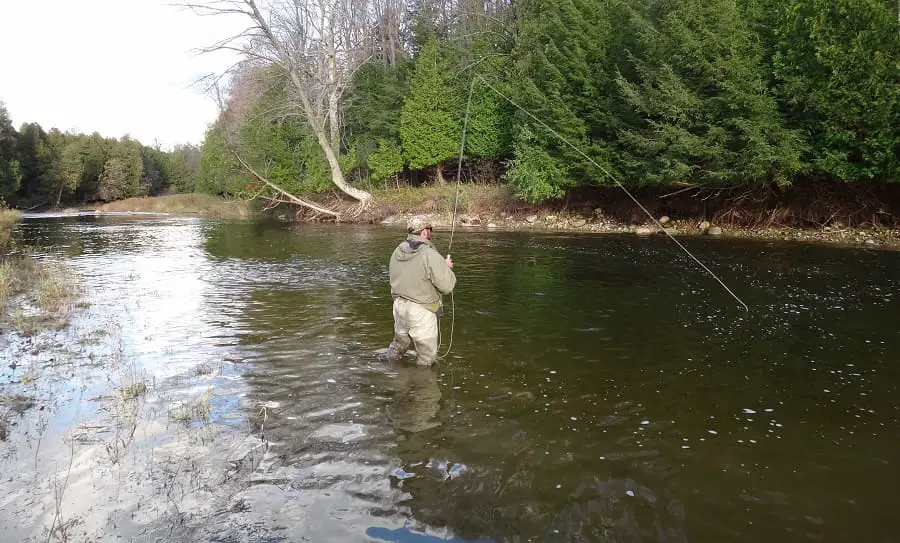
Ask any anglers and they will tell you that spring trout fishing can be the best time of the year to fish for trout.
After a long winter when trout were mostly dormant and hard to catch, spring is when the water starts to warm and the aquatic insects start to hatch, and this is when the hungry trout start to become more active and start feeding.
I’ve been a fishing guide for over 20 years, and I’m going to share my tips and advice on how to catch more trout in the spring and how I adjust to the changing conditions.
When Does Spring Trout Fishing Begin?
Spring fishing begins depending on several factors, such as weather, water temperatures, and local trout seasons.
Spring trout fishing starts in some areas just after the rivers become ice-free and as soon as you can fish the open river. In other areas, spring fishing for trout begins when the water temperatures start to rise up into the high 40s and 50s which is when trout actively start feeding.
In some areas of the country, trout fishing starts when the official trout season begins, and that means anglers need to wait until the fishing regulations allow them to start fishing for trout.
Cold Water Of Spring
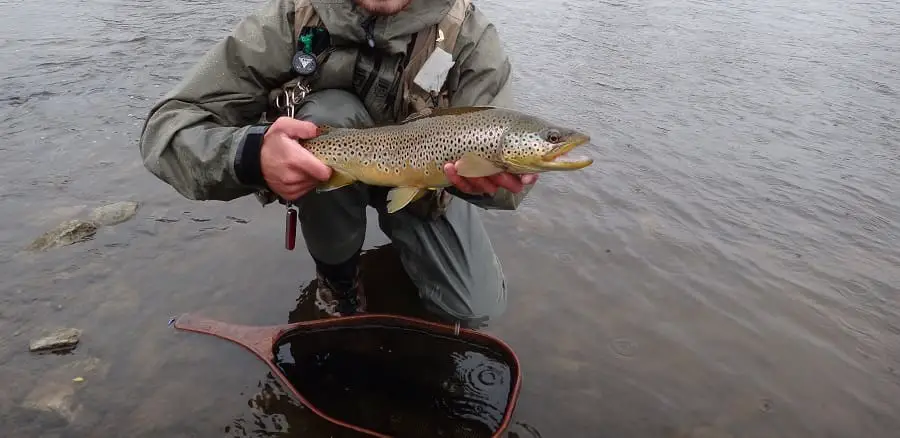
Early spring means cold water which makes the trout dormant and feed less.
Trout fishing in the spring is often best done on warmer sunny days and often later mornings. These are the days when the water warms up the most, and both the trout and the bugs start to become active. Picking your days wisely in early spring will mean more fish on the line.
The Best Time Of Day To Fish For Spring Trout
Most trout anglers would agree that the best time of day to fish for trout is in the early morning hours, but in the spring, the best time of day is often later in the morning and in the afternoon as the water temperatures warm a degree or two.
The reason for this is that the water gets very cold overnight and the dropping water temperatures make the trout inactive. As the sun starts to warm the air and the water the trout can start to become more active. Even a temperature rise of one or two degrees can make trout active at this time of year.
What Do Trout Eat In Early Spring?
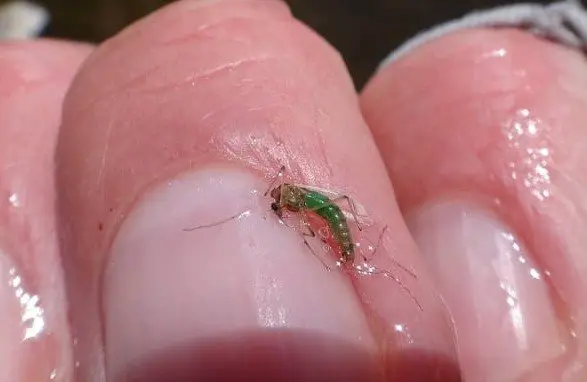
Once the trout start to become more active in the spring they will start to feed on anything that they can. The most abundant source of food in the spring is aquatic insects and fish eggs.
Early spring aquatic insects tend to be small, like the midge in the picture, but larger flies can also work.
What Do Trout Eat In Late Spring?
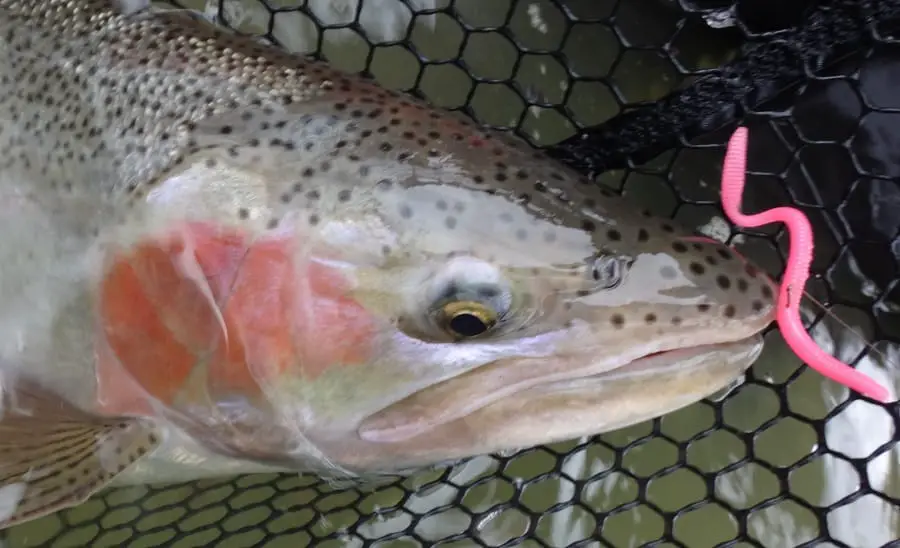
As the water starts to warm up, the trout will become more active and more aggressive, and they may start to target larger faster-moving food sources like minnows, sculpins, and crawfish. Trout will also feed heavily on insects which will be more abundant as the season progresses.
Some river fish species, like suckers and rainbow trout, will spawn in the spring, and the eggs of these fish will be an excellent food source for trout. This is when spawn sacs and trout beads are a good choice. Make sure you use the right hook when using eggs as bait.
I discuss using eggs on my page Spawn Bags – Guide Secrets For More Fish and I also talk about a great alternative to reel eggs on my page Fishing With Beads: 5 Guide Tips For More Fish
Later in the spring, it’s also common to see a lot of worms which are a great food source for trout.
Locating Trout During The Spring
Trout will hold in different sections of the river at different times of the year. Some will even migrate 20 miles or more to more.
I have seen radio transmitter tracking studies that showed big brown trout would move over 10 miles to winter over in big deep pools and then move back to within 3 feet of where they were living the year before.
Trout will also move daily and it will depend on water temps and food sources. I have witnessed hundreds of times very big trout that will move up from deep parts of a big pool where they rest to the head of a pool that is 1 or 2 feet deep so they can be the first in line to eat.
I’ve also witnessed fish that will hold in the deeper slower water in the spring when the water is very cold to shallower water when the water warms a few degrees in the middle of the day or a few days later.
Colder inactive spring trout will hold in deeper slower sections of the river, and the more active fish might move shallower to feed.
My rule of thumb is to fish deeper slower water when the trout are inactive and then try faster shallower water when they are more active.
Tactics For Spring Trout
I use a number of tactics for catching trout in the spring, and I will often change my tactics depending on the river conditions. It’s often better to use slow-moving tactics when the water is really cold and leave the faster tactics like lure fishing to the warmer days when the trout are most active.
Spring Fly Fishing For Trout
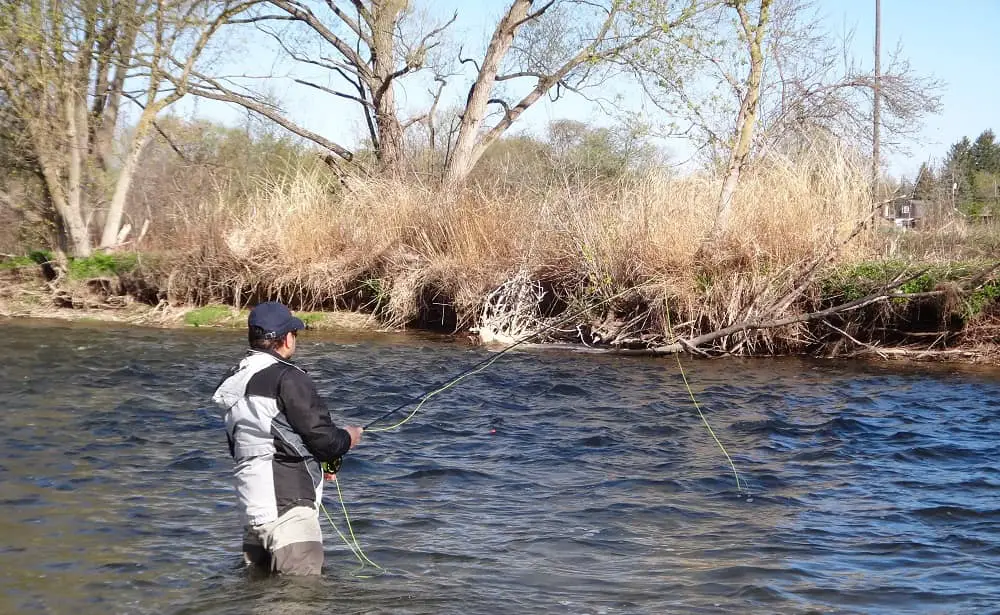
Spring fly fishing for trout is a great way to target trout in colder and warmer water. With fly fishing, you can easily imitate the aquatic insect using a method called nymph fishing.
You can get more information on nymphing for trout on my page Indicator Nymphing: 13 Tips From An Expert River Guide.
When the water is a bit warmer, and the trout are more active, you can use streamer flies to imitate baitfish.
I tend to use very small flies to catch more trout in the spring. The best trout flies that I like are:
- Pheasant Tail nymph in sizes 14, 16 and 18
- Rainbow Warrior in sizes 14, 16, and 18
- Prince Nymph in sizes 14, 16 and 18
- Davie’s Polish Pheasant Tail nymph in sizes 12, 14,16 and 18
- Higa’s SOS fly in sizes 14m 16 and 18
- Simple Scud like the Diamond Dub Scud in sizes 16 and 18
- The Frenchie has been one of my most productive flies over the last 5 years. This Hot Spot Pheasant Tail Jig Fly is a good version of the Frenchie that I use.
Check out my page for the best Spring Trout Flies
Spin Fishing With Flies
Just because you don’t fly fish you can still use flies. I use flies when float fishing and when bottom bouncing which are two methods I discuss below.
You can also check out my page How To Fish Flies With Spinning Gear: 2 Best Methods
Float Fishing For Spring Trout
Float fishing is a great way to catch trout because you can present your bait to the trout at a slower speed. Float fishing allows you to also keep your bait in the strike zone longer and both of these factors can be great on trout that are still a little inactive.
Float fishing can be the most effective method in rivers that are 3 feet deep to 10 feet deep and it can be great in both slow and fast water.
Float fishing can be done using a spinning reel or a Centerpin reel and your chances of catching trout greatly depend on how well you do float fishing. There is more to float fishing than just casting a float in the water and watching it go.
To see how to do float fishing better, go to my webpage Float Fishing For Trout – An Expert Guides Best Tips
Bottom Bouncing For Spring Trout
Bottom bouncing for trout is great any time of the year and it is the best method to use in water under 3 feet deep. The great thing with bottom bouncing for spring trout is that you can use super small flies or larger baits like spawn sacs.
I use and teach an advanced bottom-bouncing method that is far better than traditional bottom-bouncing. You can see that method and other tips about bottom bouncing on my page Bottom Bouncing – 5 Proven Guide Tips For More Fish
Lure Fishing For Spring Trout
When the water starts to warm up a bit, trout fishing with lures can be an excellent option. Even if the water is still very cold, some lures have a great enticing wobble and move slow enough that trout will still grab them.
I discuss my favorite trout and steelhead lures and my tactics for lure fishing for trout on my page Lure Fishing For Trout: Tactics From A Pro River Guide.
Also, check out my page Best Trout Lures For Spring
Best Bait For Spring Trout
The best bait for catching trout in the spring will depend on the conditions. In the early spring cold water, I like to use small flies and small egg imitations, as well as small pink plastic worms. As the water warms, these same baits will work but I will also try lures, leeches, jigs, minnows, and worms.
Other favorite spring trout baits include:
- Berkley plastic worms in pink, red, and natural brown – buy at FishUSA.com
- TroutBeads, which you can see or purchase at FishUSA – HERE
- Berkley Gulp! Maggots – These have worked well when trout are nervous. – You can check these out at Bass Pro Shops here
- Berkley Gulp! Earthworms – The Red Wiggler – You can check these out at Bass Pro Shops- HERE
- Berkley PowerBait Power Wigglers – You can check these out at Bass Pro Shops- HERE
For more on my favorite trout baits check out my page Best Trout Bait – The Only 5 Baits You Will Ever Need
Spring To Summer Transition For More Trout
I wish the great spring fishing would last all year, but it doesn’t, and that means potentially difficult trout fishing in the heat if the summer. If you transition and make the required changes you can keep trout fishing in the summer with consistent success.
My Most Valuable Tip For More Trout
I promised you I would include my most valuable tip for catching more trout, so here it is.
The problem is that I believe fishing is a process, and every part of the process has to be done correctly or the advice you get could be useless.
- Use the right gear – Suitable rods and reels make a big difference.
- Use the right line – Use a good quality line suitable to the methods you use.
- Use the right leader size – A leader that is too thick can prevent trout from biting
- Use the right leader setup which includes good hooks and the right weights
- Be sure your presentation is perfect – Presentation is key, don’t screw it up.
- Learn how to approach a spot and how to be stealthy so you don’t spook the trout.
- Use the right baits based on the conditions and try different sizes and colors to see what the trout want.
All of this must be done well. Doing one this wrong, such as using the wrong hook or wrong-sized leader, can drastically reduce your chances of catching trout.
Tight Lines,
Graham
